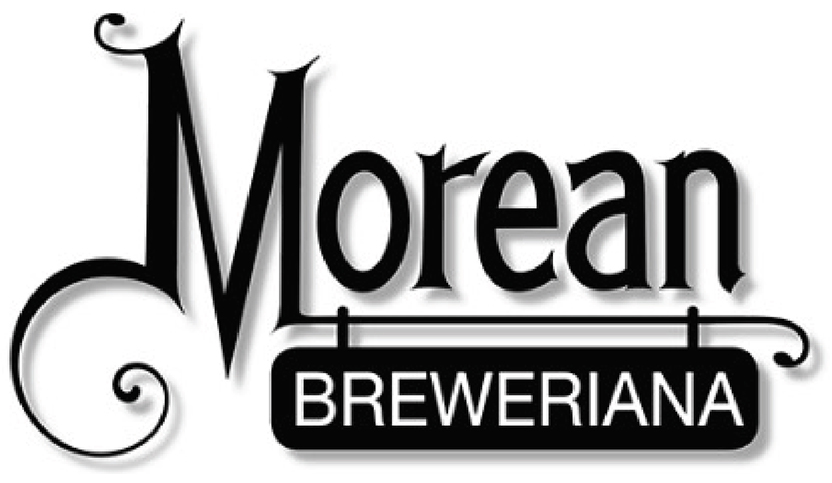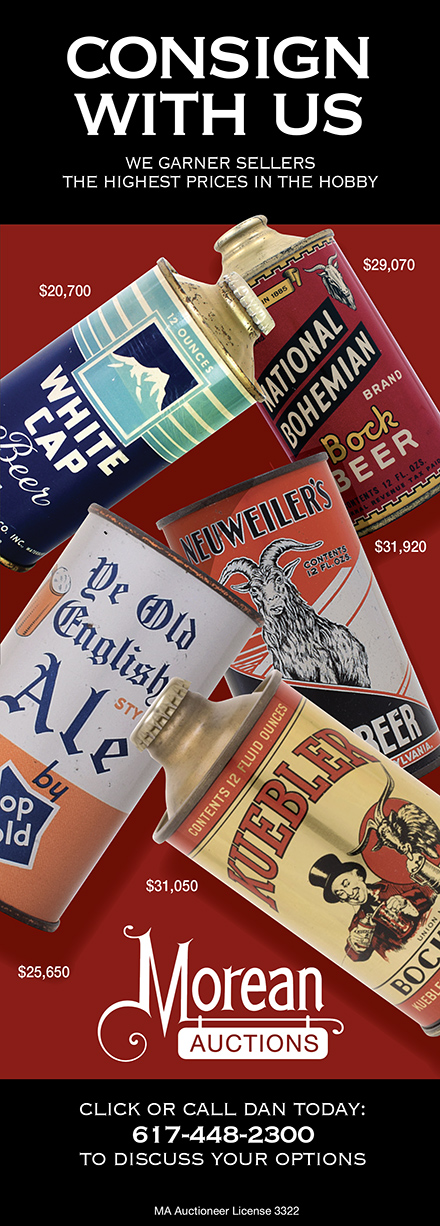History of Beer Cans
Posted: 6/5/2008 • Last Updated: 12/10/2015
A Brief History of the Beer Can
The interest in packaging beer in metal cans dates to before Prohibition in America. The 18th Amendment prohibition against the transport and sale of alcoholic beverages became effective on January 16, 1920. Before Prohibition, beer was distributed mostly in bottles, kegs and directly from the tap (either at a local bar or at the brewery itself). At this time, other foods were packaged in metal cans and the American Can Company began looking into the feasibility of canning beer.
 Packaging beer in cans presented a number of technical and marketing issues. One engineering challenge was to find affordable materials and methods of producing cans strong enough to withstand the high pressure that occurs during pasteurization. Another issue was the reality and the perception that the metal beer cans would negatively affect the taste of the beer.
Packaging beer in cans presented a number of technical and marketing issues. One engineering challenge was to find affordable materials and methods of producing cans strong enough to withstand the high pressure that occurs during pasteurization. Another issue was the reality and the perception that the metal beer cans would negatively affect the taste of the beer.
Shortly before the repeal of Prohibition in 1933, the American Can Co. solved the problem with its "Keglined" cans. These cans were structurally capable of withstanding the high pressure and were internally sealed to prevent the transfer of a metallic taste from the metal can to the beer. These first cans were made of a heavy guage steel and required a church-key opener or other tool to punch a hole in the solid, flat top (hence these cans are referred to as "flat tops.").
The image to the left, taken of a 1935 Waldorf Ale can, provides an example of how American Can Co. and breweries addressed anticipated consumer concerns about the quality of beer in metal containers.
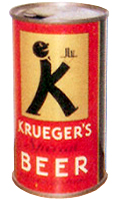
The first brewery to take the chance and package beer in cans was the Gottfried Krueger Brewing Co. of Newark, New Jersey. In November of 1933, Krueger signed an agreement with the American Can Co. to create the first beer cans to go into production. By the end of that November, American had installed a temporary canning line and delivered two thousand cans of Krueger's Special Beer. These Krueger Special Beer cans were filled with 3.2% beer, the highest alcohol content then permitted by law. Beer can history was made. Krueger's Special Beer became THE first beer can ever produced.
The December 28, 1933 issue of Brewer's News featured a photograph of 2 Krueger Special Beer cans. There are, at best, 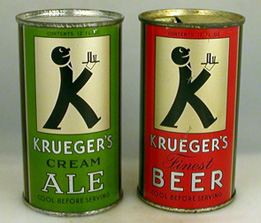 two examples of this can known to exist today. See photo to the right.
two examples of this can known to exist today. See photo to the right.
When the survey came back, 91% gave Krueger's Special Beer in cans the thumbs up, and 85% said it tasted more like draft beer than did bottled beer. Encouraged, Krueger went full steam ahead with canning beer and never looked back. On January 24, 1935, Krueger's Cream Ale and Krueger's Finest Beer in cans was introduced to the market.
The pair of cans to the left are examples of the first Kreuger Ale & Beer cans widely distributed. Although alcohol containers were required to carry an "Internal Revenue Tax Paid" or like statement from June, 1935 through March, 1950, these "pre-tax" cans were released so early, they did not yet have the statement. This rare and historic set was acquired, along with the rest of the Lilek instructional collection, by Breweriana.com in January, 2007.
Krueger enjoyed great success with canned beer and by August, 1935, Krueger was buying 180,000 cans a day from American Can Co. This regional brewery began claiming a percentage of the market dominated by the three large breweries (Anheuser-Bush, Pabst & Schlitz). Pabst had seen enough and introduced its Export Beer in these flat tops cans in July of 1935.
Schlitz also joined the canning craze but introduced its Lager Beer in a beer can that was quite different than Krueger's and Pabst's flat tops. Schlitz Lager was introduced in a flat bottom, inverted rib cone top can made by Continental Can Co. (See photo to the right of the first cone top beer can. This example was from the David and Jane Stark collection, likely the most important beer can collection ever assembled, acquired by Breweriana.com in late 2007). 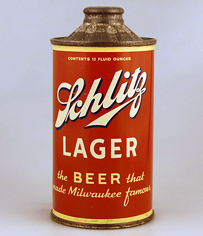 The flat bottom, inverted rib cone top is one of several types of cone tops to be produced over the years (see "Types of Beer Cans" for more info).
The flat bottom, inverted rib cone top is one of several types of cone tops to be produced over the years (see "Types of Beer Cans" for more info).
So, the answer to the common question: "What was the first type of beer can?," is--- the flat top. However, flat tops beat cone tops to the wide distribution market only by a few months....both were in distribution by late 1935.
By the end of 1935, many other breweries were canning beer in American's Keglined cans (Ballantine, Feigenspan, Globe, Gunther, Pittsburgh Brewing, Sheidt and Wehle). American was stretched beyond capacity enabling the National Can Co to supply its "Double-Lined" flat tops to some of the smaller breweries on a much smaller scale. The three canning companies combined sold 160,000,000 beer cans in the first year beer cans hit the market.
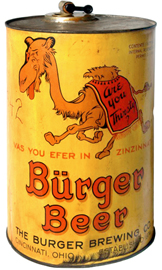 An interesting blip on the early beer can scene is the gigantic 1/16th barrel "Can-O-Draft" can made by Heekin. The only brewery known to have distributed beer in this container is Burger Brewing of Cincinnati, Ohio. A couple of these cans have turned up in the past few years but it remains very rare.
An interesting blip on the early beer can scene is the gigantic 1/16th barrel "Can-O-Draft" can made by Heekin. The only brewery known to have distributed beer in this container is Burger Brewing of Cincinnati, Ohio. A couple of these cans have turned up in the past few years but it remains very rare.
Although beer cans took root in 1935 and over a billion cans were sold in 1941 alone, this represented only ten percent of the packaged beer market. It wasn't until nearly 1960 that canned beer sales surpassed bottled beer sales.
 From about 1942 through 1947, domestic use of metals was limited pursuant to the War Production Board Order M-81, and beer can production for domestic use came to a halt. Beer cans produced during those years were for shipment to the services oversees and are easily identifialble by their olive drab and black camoflauge colors. The Breidts cone top to right is a rare example of such a can (sold on Breweriana.com in 2008).
From about 1942 through 1947, domestic use of metals was limited pursuant to the War Production Board Order M-81, and beer can production for domestic use came to a halt. Beer cans produced during those years were for shipment to the services oversees and are easily identifialble by their olive drab and black camoflauge colors. The Breidts cone top to right is a rare example of such a can (sold on Breweriana.com in 2008).
By the mid-1950s, it became clear that the flat top would beat out the cone top for market dominance. This is largely because fllat tops filled faster (and, therefore, provided for better economies of scale) and stacked easier (which was good for transporting them and good for storing them in stores and in consumer refrigerators).
 The Hawaii Brewing Company packaged beer in the first all-aluminum can in 1958. This can was aluminum with a paper label. The example of this can to the left was sold at Breweriana.com in 2008.
The Hawaii Brewing Company packaged beer in the first all-aluminum can in 1958. This can was aluminum with a paper label. The example of this can to the left was sold at Breweriana.com in 2008.
The flat top beer can underwent some minor changes but basically remained about the same type of can (steel and required a church-key opener to punch a hole in the lid) from its introduction in 1933 until the early 1960s. In late 1959, early 1960s, Ermal Fraze developed an early version of self-opening cans now called a "zip top" (note there were three patents pulled on self-opening cans as early as the 1930s). This type of can has a perforated tab attached to a pull lever. Fraze successfully pitched the concept and negotiated a deal with the Aluminum Company of America (ALCOA). In March of 1962, the Pittsburgh Brewing Co. test marketed the first "tap-top" beer can in Virginia. It was a quick hit.
The self-opening can underwent many changes to get from the first finger-cutting zip tops to the modern day sta-tabs. The pull ring followed the zip tab and was an improvement in that it no longer cut fingers. But, both types were revovable tabs that wound up littering beaches, injuring consumers, and harming wildlife. The first Sta-Tab cans with a non-detachable tab were best developed by Reynolds and first introduced to the market by Falls City Brewing in 1975.
The bar code was first introduced on the beer can in 1979.
Probably the last noteworthy development in canned beer is the aluminum bottle (known by collectors as "Cabottles"). Beer was first marketed in these Alcoa made containers by the Pittsburgh Brewing Co. in 2004. They are tall with long necks, are capped like bottles and otherwise resemble bottles but are made of aluminum...reminiscent of the crowntainer.
One can only imagine what form and size containers will take decades from now but one thing is for sure, it would be a tall task for them to match the solidity and appeal of early beer cans.
